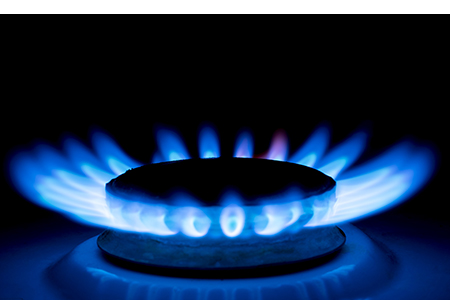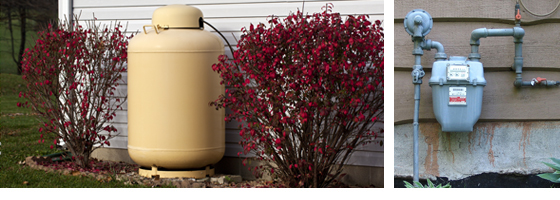 |
 |
|
Welcome to National Grid’s Tips of the Trade for first responders. These tips are intended to help you respond safely and effectively to incidents involving natural gas and electricity. Please review them with your team.
|
|
| Natural gas and propane: What’s the difference? |
|
| Learn their key characteristics to stay safe |
 Natural gas and propane are gases that may be used for cooking, heating, generating electricity and powering vehicles. However, they are not interchangeable. Learning their differences and similarities will help you respond safely to leaks and fires involving these common fuels. Natural gas and propane are gases that may be used for cooking, heating, generating electricity and powering vehicles. However, they are not interchangeable. Learning their differences and similarities will help you respond safely to leaks and fires involving these common fuels.
|
| • |
|
Color and odor. Both natural gas and propane are colorless and odorless. Both gases are treated with a chemical odorant called mercaptan, which gives them a distinctive, sulfur-like odor that makes leaks easier to detect. However, sometimes this odor may fade, and natural gas in transmission
lines is not always odorized. So never rely on your sense of smell to determine whether natural gas or propane is leaking. Use a combustible gas indicator (CGI) for accurate leak detection and monitoring. |
| • |
|
Storage and delivery. Natural gas is delivered to structures through a pressurized network of underground pipes. Propane is delivered by
trucks and stored in specially-designed tanks at the point of use, which makes it available in remote areas not covered by a natural gas distribution network. Natural gas is available on an unlimited basis, while the supply of propane to a structure is limited to the capacity of the tank. |
|
 |
| • |
|
Pressure. Propane and natural gas appliances operate at different pressures and require different
regulators and fittings. Typical residential natural gas appliances and water heaters require gas pressure of 0.25 psi. Common operating pressure for propane-fueled appliances is about 0.36–0.40 psi. |
| • |
|
Leak behavior. A propane leak will persist until the tank supply is exhausted or until the propane is turned off at the tank shut-off
valve or appliance supply line. Leaking natural gas will continue to flow until the supply is turned off at an appliance supply line or service meter valve, or until the natural gas utility closes an underground system control valve. (First responders should never operate underground natural gas valves.) |
| • |
|
Migration behavior. Natural gas is lighter than air. It will follow the path of least resistance and travel upward through any available space.
When underground in enclosed spaces, natural gas will move laterally until it finds a way up; in this fashion, gas may accumulate in buildings some distance from the original leak site. Propane is heavier than air and will sink to the lowest part of a room or building. It may travel along the ground and accumulate in trenches, drains, basements and other low-lying areas. |
| • |
|
Flammability. Both fuels are extremely flammable. Propane will burn when the gas-to-air ratio is between about 2 and 9.5%;
for natural gas, this range is between about 5 and 15%. Exercise extreme caution to eliminate ignition hazards in the vicinity of any natural gas or propane leak. |
| • |
|
Carbon monoxide risk. Both natural gas and propane can produce deadly carbon monoxide (CO) if burned without sufficient oxygen, and should never be utilized in an unvented environment. CO accumulation can be prevented through proper appliance installation, maintenance and use. |
|
For more first responder safety information, visit
firstresponder.ngridsafety.com. |
|
|
|
|
|
|
|
| Connect with us: |
#11671 © 2019 Culver Media, LLC |
|
|
|
|
|
|
|